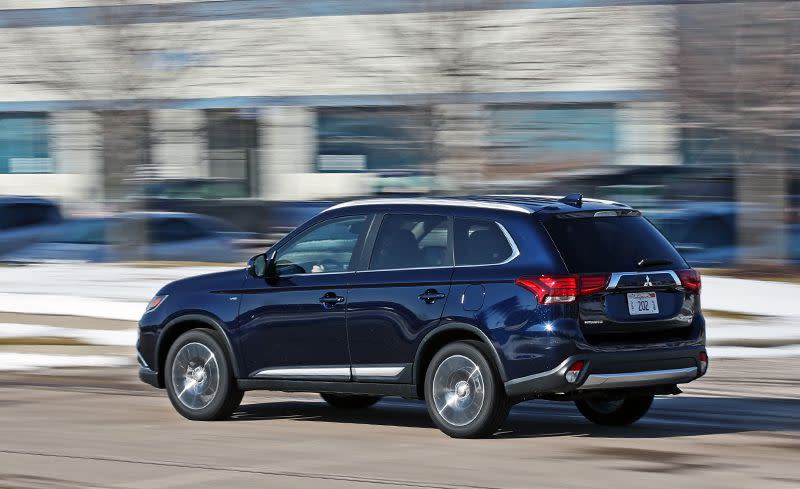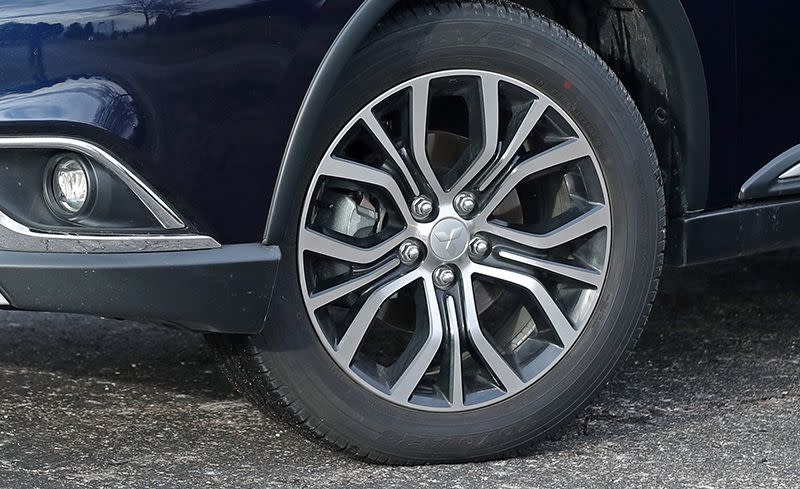Performance and Driving Impressions
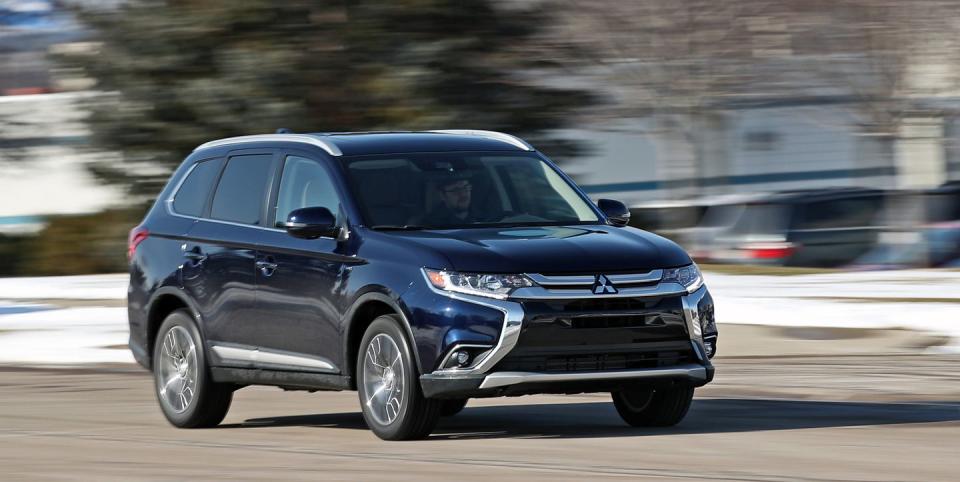
Performance and Driving Impressions Rating:

Regardless which of the three powertrains is used, the Outlander is dynamically inept. Still, its supple suspension provides a pleasant ride, and the plug-in hybrid has unique electric traits including prompt accelerator responses and multiple regenerative-braking modes.
Acceleration
While we’ve tested the four-cylinder Outlander, its acceleration (zero to 60 mph in 9.3 seconds) was unimpressive and slower than all rivals in this set. The GT model-with its 224-hp V-6 and six-speed automatic transmission-was much quicker than the four-cylinder and plug-in hybrid models. With solid off-the-line acceleration, it confidently hustled around town and on the highway. But since most V-6 Outlanders don’t go drag racing, the quick electric responses elicited by the PHEV we tested will satisfy more folks during their daily commute. The hybrid responds crisply to your right foot’s intentions on the accelerator and feels quicker than its performance numbers suggest.
Test Results: Acceleration
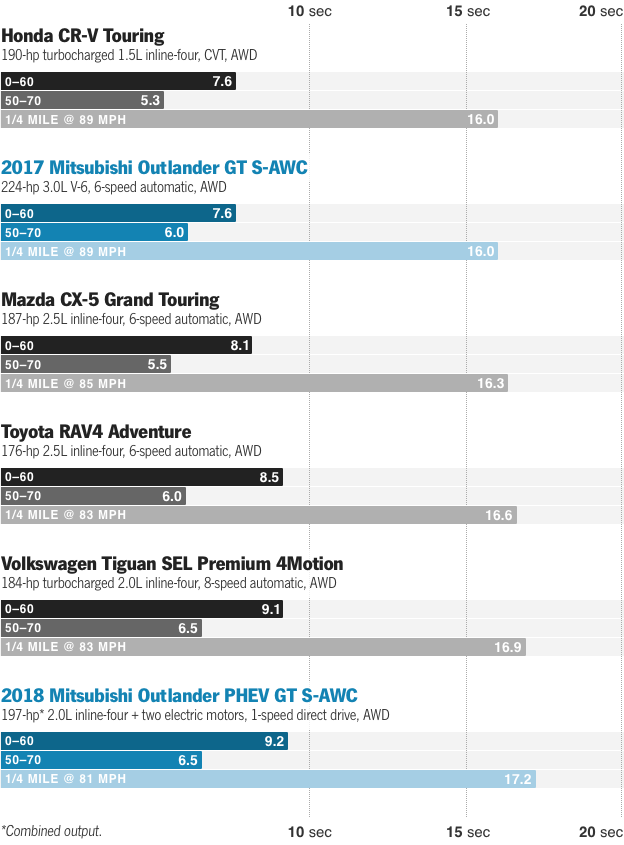
Ride, Handling, and Steering
We’ve driven Outlanders with all three powertrains, and they’ve all had a quiet and comfortable ride on the diversified surfaces around southeast Michigan. However, overly soft suspensions contributed to excessive body motion that diminished composure when cornering. While Mitsubishi’s unique all-wheel-drive system is intended to improve cornering capability, all our test vehicles used this setup and still felt less poised than rivals. The Outlander GT had a competitive 0.78 g of grip on our skidpad, but its lifeless steering felt like holding hands with a forlorn lover-cold and disconnected with an uncomfortable twitch every now and then. All three Outlanders we drove felt the same, which underscores their unremarkable driving dynamics.
Test Results: Maximum Cornering Capability

Braking
Both the Outlander GT and the PHEV stopped within one foot of each other during our emergency-braking test. Those numbers were similar to every competitor except the Honda CR-V, which needed only 166 feet. Despite similar stopping power, the GT’s brake pedal felt spongy with erratic reactions. Although the PHEV’s brake pedal was not inspiring either, its regenerative-braking system (which also helps charge the battery) has multiple settings. The six different levels of regen are chosen by paddles behind the steering wheel, which gradually adjust how much brake pedal is needed to slow down or stop.
Test Results: Maximum Braking Capability
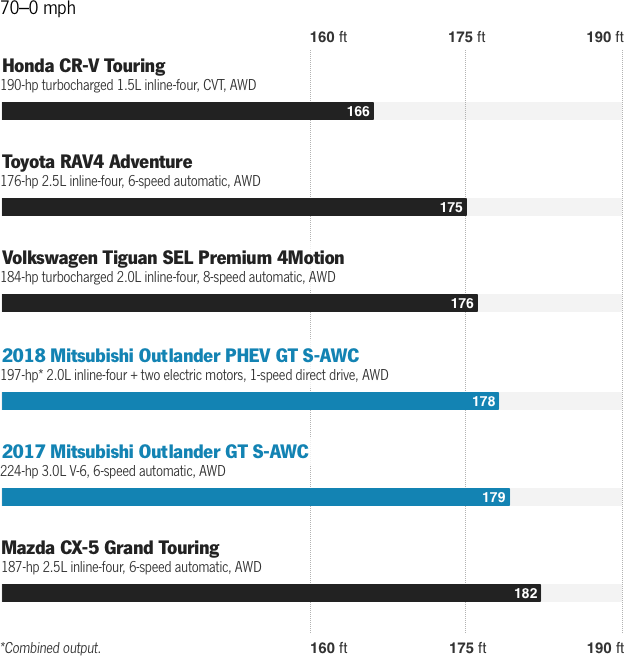
Test Results: Curb Weight and Weight Distribution
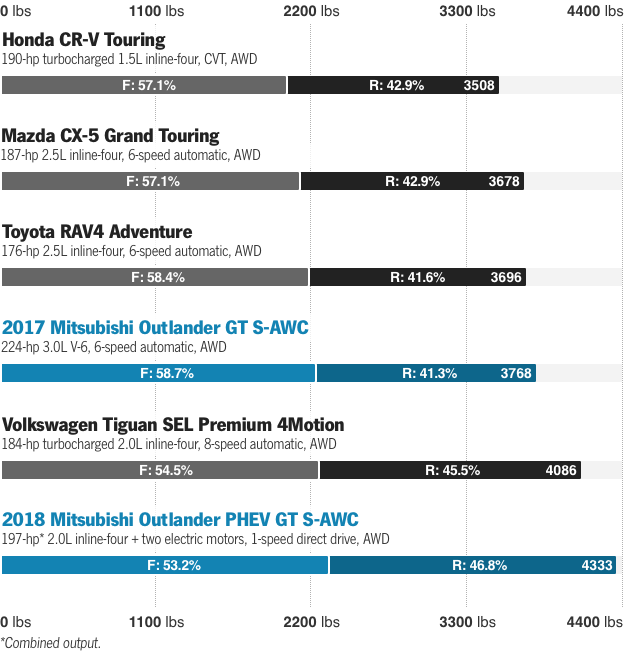
You Might Also Like

 Yahoo Autos
Yahoo Autos 
